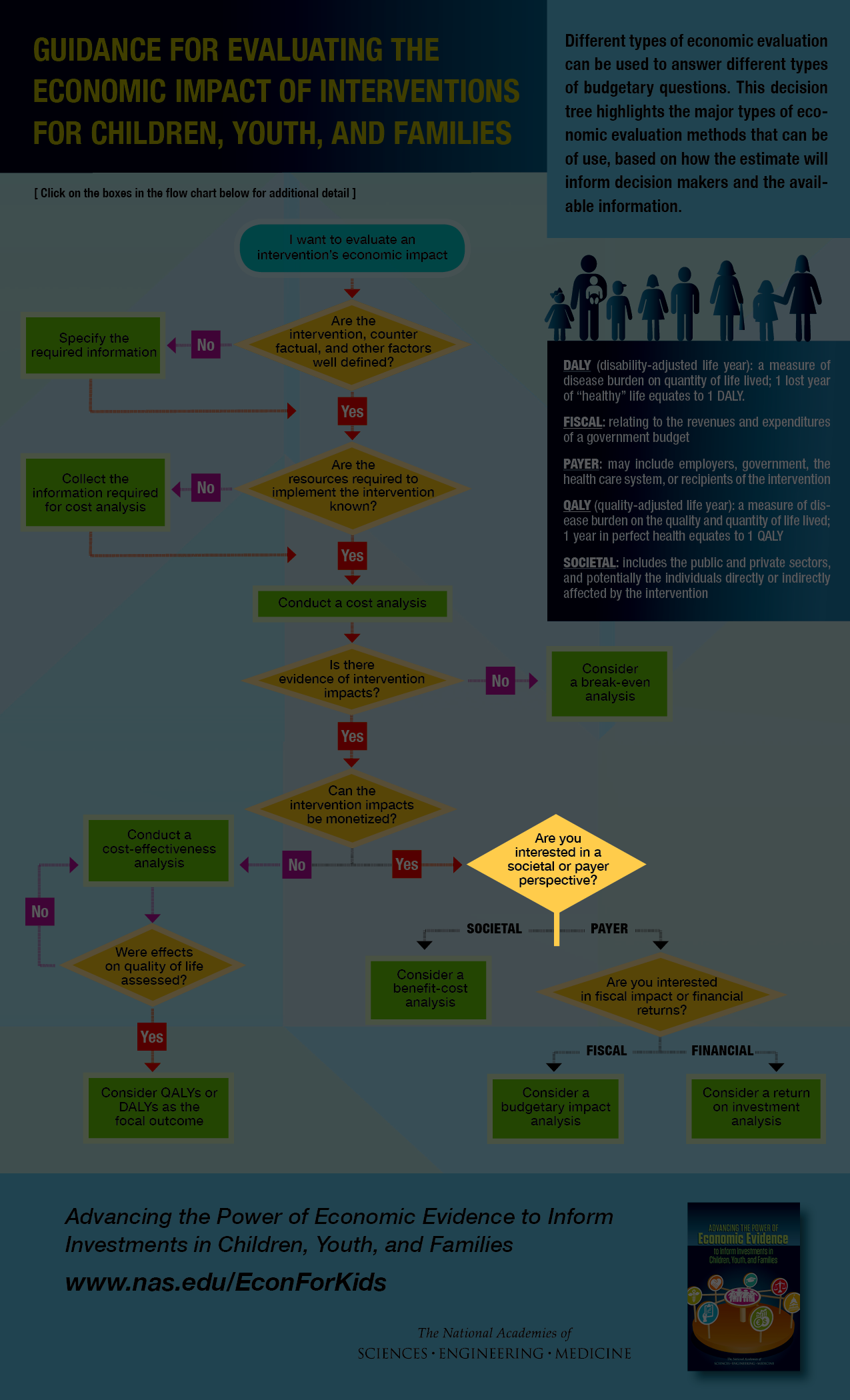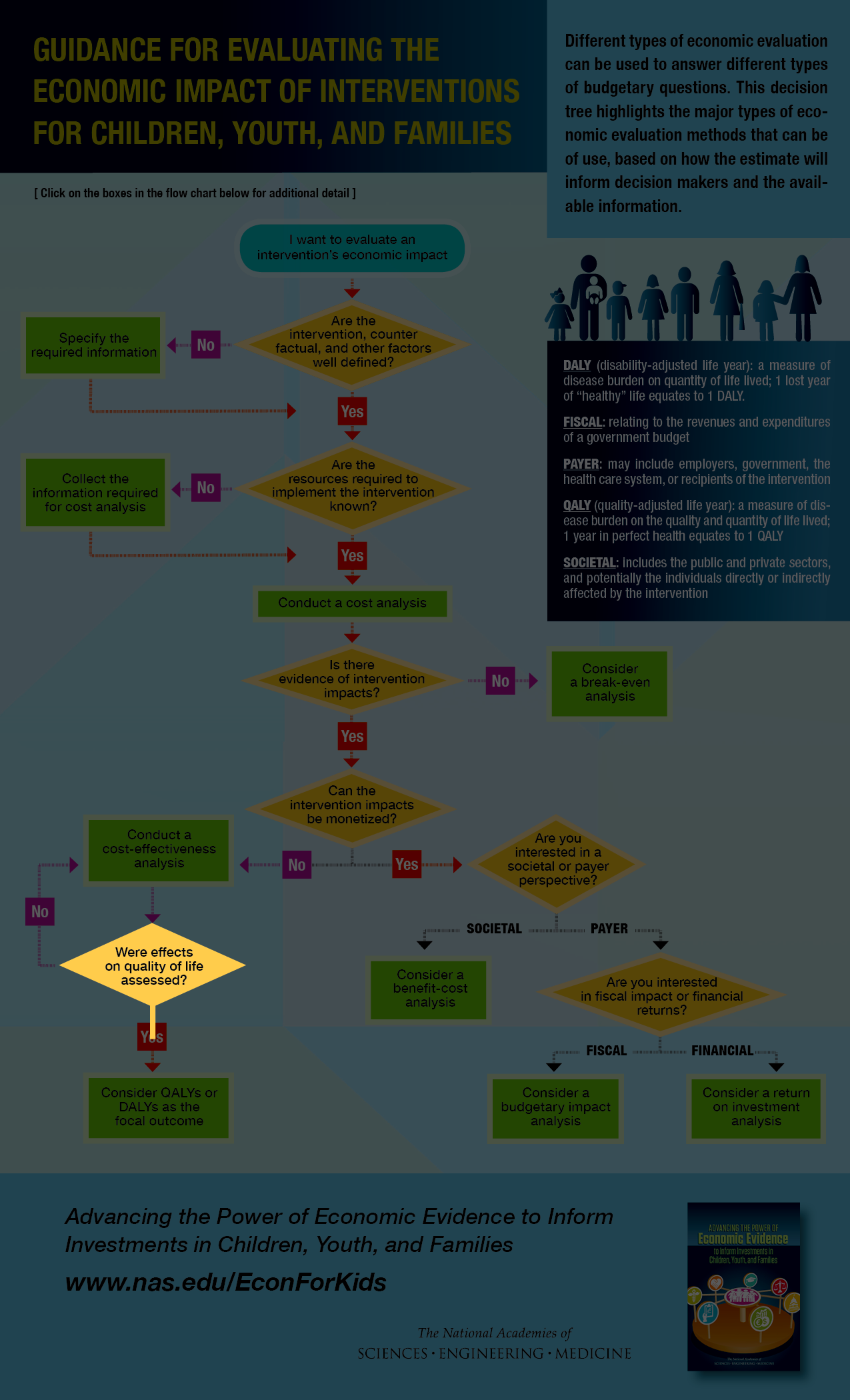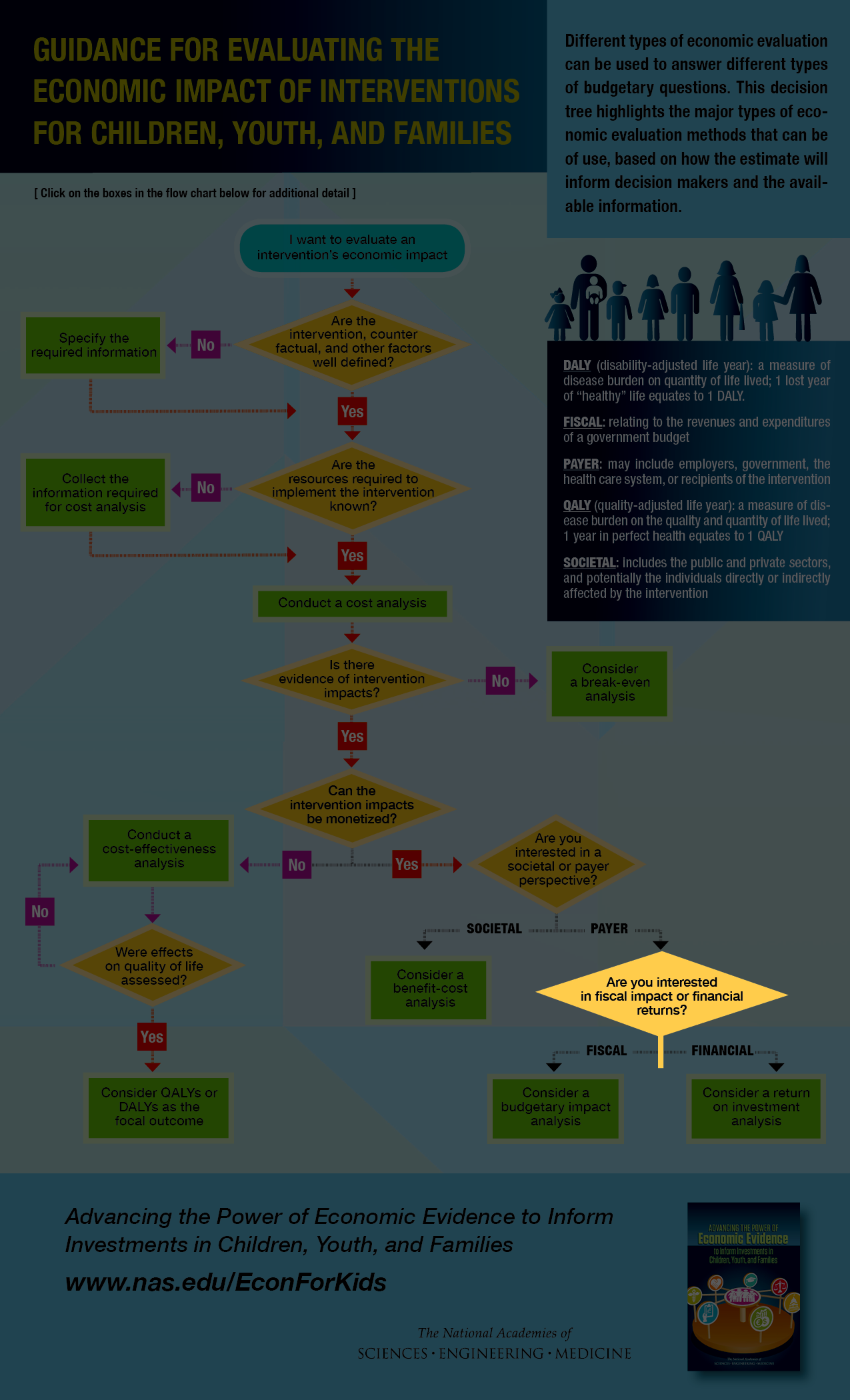

















See the report section “Consumers of Evidence” for additional guidance on the importance of identifying the consumer.
See the report section “Typologies of Use” for additional guidance on how the economic information may be used by the consumer.
The counterfactual is the base condition used for comparison in evaluating an intervention. Example counterfactuals are: no treatment, the current situation, the best proven treatment.
See the report section “Determining Whether an Intervention is Ready for Economic Evaluation” for additional guidance.
Review the “Checklist of best practices for producing high quality economic evidence.”
Please see the report section “Evaluating Intervention Cost” for additional guidance.
Review the “Checklist of best practices for producing high quality economic evidence.”
Evidence of impact may be drawn from a completed program evaluation or it may be presumed from an economic evaluation conducted for planning purposes. Without valid evidence of causal impact, there is no reliable return on investment to capture in an economic evaluation.
See report section on “Research Designs and Evidence of Intervention Impact” for additional guidance.
Monetizing means converting an intervention’s impacts from nonmonetary to monetary terms. Not all outcomes can be monetized; for example, interventions may impact the quality of parent-child relationships, but the economic consequences of these gains have not been studied.
A payer perspective captures the perspective of the stakeholder that bears the intervention’s costs. Payers may include employers, government, the health care system, or recipients of the intervention.
A societal perspective captures the public sector and the private sector and includes all stakeholders who have some relationship to an intervention, either as bearers of costs or as beneficiaries, as well as those who may be affected only indirectly.
Quality of life is an important intangible that is likely to be relevant in valuing outcomes for interventions for children, youth, and families. Quality-of-life impacts may constitute a large share of the benefits of such interventions; however, the difficulty of measuring and valuing quality-of-life impacts is a long-standing concern. See report section “Valuing Quality of Life” for further guidance.
Please see the report section “Evaluating Intervention Cost” for additional guidance.
Review the “Checklist of best practices for producing high quality economic evidence.”
A cost analysis provides a complete accounting of the economic costs of a given intervention (including the full economic value of the resources used to implement a given intervention). A cost analysis is one component of all other cost and outcome evaluation methods.
Please see the report section “Evaluating Intervention Cost” for additional guidance.
This method of economic evaluation can be used to help determine how great the impact of an intervention will have to be in order to pay back the intervention’s cost (i.e., break-even). This method can be used when the outcomes of an intervention are unknown.
Cost-effectiveness analysis (CEA) can help determine the economic cost to achieve a unit change in a given outcome from an intervention (e.g., one more high school graduate) or the amount of a given outcome obtained for each dollar invested in an intervention. When comparing two or more interventions, the one that can produce the outcome at lowest cost or the one that can produce the largest gain for each dollar invested would generally be selected. For CEA, outcomes of an intervention are typically measured in nonmonetary terms.
See report section “Cost Effectiveness Analysis (CEA) and Related Methods” for further guidance. In addition, see the checklists “Best Practices for Producing High-Quality Economic Evidence” and “Best Practices for Reporting Economic Evidence,” including their sections focusing on cost-effectiveness analysis.
A benefit-cost analysis determines whether the economic value of the outcomes of an intervention exceeds the economic value of the resources required to implement the intervention. This type of analysis answers the question: Is the investment a justifiable use of scarce resources? Interventions with net value, or total net benefit, greater than zero are considered justifiable from an economic standpoint.
See report section on “Benefit-Cost Analysis and Related Methods” for additional guidance. In addition, see the checklists “Best Practices for Producing High-Quality Economic Evidence” and “Best Practices for Reporting Economic Evidence,” including their sections focusing on benefit-cost analysis.
QALY and DALY scales are commonly used in economic evaluations of health services. These scales also show promise as an important and useful outcome of interventions for children, youth, and families that are not targeted to health. See report section “Valuing Quality of Life” for further guidance.
Budgetary impact analysis is a special kind of cost-savings analysis that examines the impact, year-by-year, of an intervention on the government budget for aggregate or specific agencies. See the checklists “Best Practices for Producing High-Quality Economic Evidence” and “Best Practices for Reporting Economic Evidence” for further guidance.
Return on investment analysis is used in special cases in which a benefit-cost analysis is conducted for a specific stakeholder group. (In the case of government stakeholders, it is known as cost-savings analysis.)
“Fiscal impact” relates to the revenues and expenditures of a government budget. “Financial return” is a more general term that relates to a profit on an investment.
















